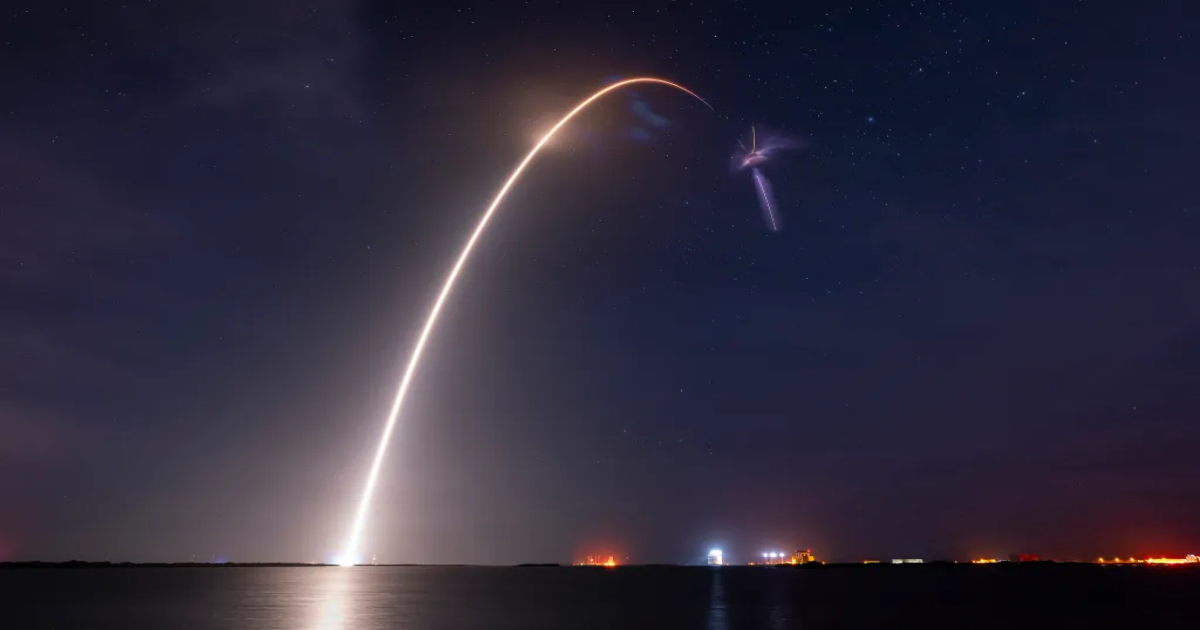SpaceX knocked out both an early Monday morning and evening launch each with booster landings that brought sonic booms to parts of Central Florida.
First up was a Falcon 9 on the CRS-32 resupply mission to the International Space Station that launched from Kennedy Space Center Launch Pad 39-A at 4:15 a.m.
The first-stage booster made its third flight with a recovery landing at Cape Canaveral Space Force Station’s Landing Zone 1.
CRS-32 sent a cargo Dragon spacecraft with about 6,700 pounds of supplies to the ISS. That includes a demonstration of refined maneuvers for free-floating robots, an enhanced air quality monitoring system that could be used for missions to the moon and Mars, and two atomic clocks. This is the fifth flight of the Dragon spacecraft. It will dock with the ISS after a 28-hour flight targeting 8:20 a.m. Tuesday. It won’t undock until May.
Next up was a Falcon 9 on the Bandwagon-3 rideshare mission for multiple customers lifting off from Canaveral’s Space Launch Complex 40 at 8:48 p.m.
This was the third flight for the first-stage booster and it made a recovery landing at Canaveral’s Landing Zone 2.
“There is the possibility that residents of Brevard, Orange, Osceola, Indian River, Seminole, Volusia, Polk, St. Lucie, and Okeechobee counties may hear one or more sonic booms during the landings, but what residents experience will depend on weather and other conditions,” SpaceX said in an alert ahead of the launches.
They marked the 30th and 31st launches from the Space Coast this year, with all but one coming from SpaceX.
Blue Origin had the other, but United Launch Alliance is slated to make its first flight next Monday when an Atlas V rocket on the delayed Kuiper 1 mission targets a launch from Canaveral’s Space Launch Complex 41 during a two-hour window from 7-9 p.m. and backup on April 29 during same window.
It would be the inaugural launch of Amazon’s Project Kuiper to deliver the first satellites of the constellation into low-Earth orbit.
Originally Published: April 21, 2025 at 6:57 AM EDT


